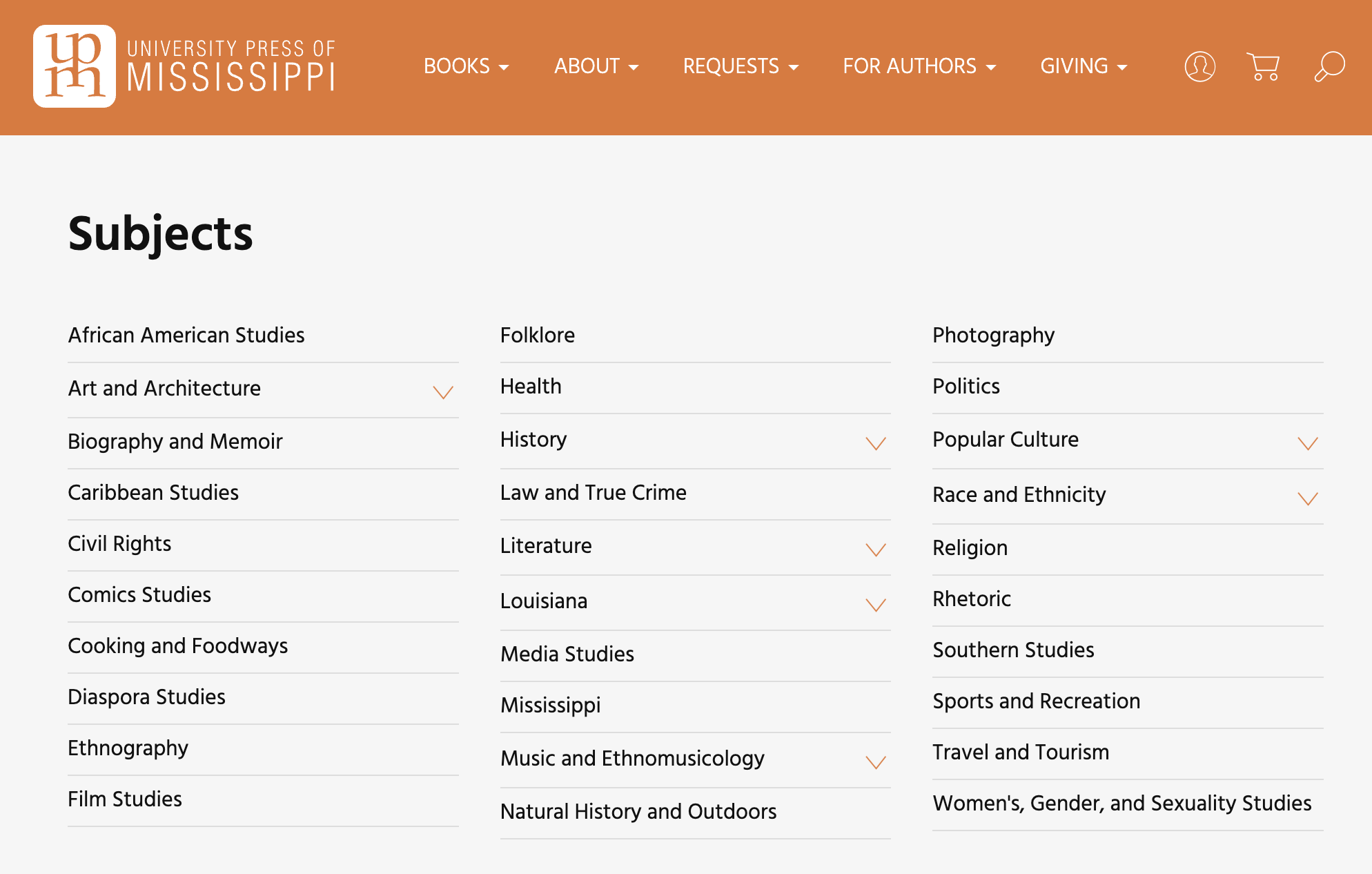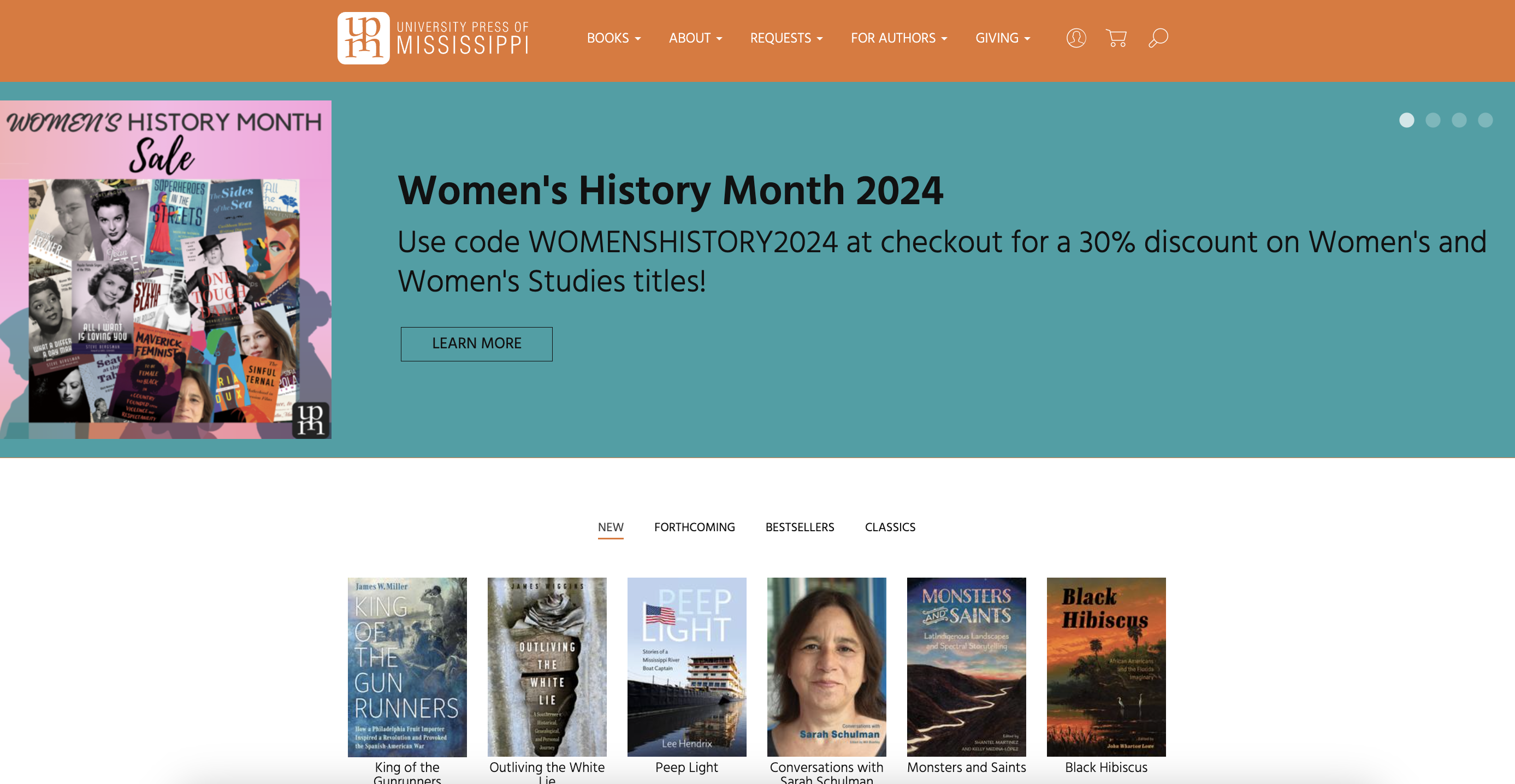
The team at the University Press of Mississippi (UPM) came to us with a familiar story. Updating their website was tedious and time-consuming. Their data and systems didn’t speak the same language. The site was built by a freelance developer who wasn't always easy to reach. Everything was done manually. It may have been okay in 2005, but by 2018 just didn’t work for the press anymore.
UPM started looking for a website developer that checked a few boxes: a company, not just an individual; a team who truly understood publishing and the press’ specific needs; an integrated data solution; and automatic flow to the website.
“Ideally, we also wanted people familiar with the publishing industry and the specific needs of publishers, and who were willing to work with us to customize things to our individual needs,” says Kristin Kirkpatrick, Electronic and Direct-to-Consumer Sales Manager.
Smooth automation for enhanced discovery
UPM adopted VirtuSales’ BiblioSuite to refine and centralize their ONIX data. At about the same time, ReaderBound began building the site that would leverage all the title information coming from BiblioSuite. The goal was flawless automation: new records imported; existing listings updated; title selections, series, categories, etc., all refreshed quietly and cleanly in the background.
The goal was to use every part of the title data coming from BiblioSuite to ensure that readers have a variety of interesting and effective ways to explore the UPM catalogue.
For example, UPM provides BISAC categories in its ONIX data. But they also supply a set of custom subjects that allow them a great deal more flexibility and personalization in terms of how they categorize books on their website. The press can organize and present their list in a way that is more meaningful for their customers.
These subject references appear across the site: on title listings, in search results, and elsewhere. Users can also easily explore the catalogue via series, imprint, contributor, or through a search function that fully indexes all the title information.
We also showcase a lot of supporting detail and extended descriptive text for every book on the site. For example, contributor info, including bios, photos, and all works by the author. The system generates and automatically maintains a profile page like this for every contributor in the catalogue.
Each title listing also features extended text, including a full book description, short description/sales handle/keyline, reviews, awards, tables of contents, excerpts, etc. — all of which come from the ONIX. This allows us to impart as much quality and depth into the title listing as possible. It’s not only good for reader engagement on the page, but also for search and visibility.
Supporting sales
Even basic info in the ONIX record can be leveraged on a site like UPM’s. We use the <PublicationStatus> and <PublicationDate> attributes to identify forthcoming works as they come into the system. And all forthcoming books are automatically made available for advance sale. The pub date serves as a ship date for the pre-order, and that ship date notation accompanies the customer throughout the buying process. If the pub date changes or if UPM wants to revise that ship date for any other reason, they can so easily. But otherwise, this is entirely automated.
This is an easy and effective way to stretch out the sales window for new releases and to get authors and other stakeholders engaged in book marketing at the earliest possible point.
The bottom line is that readers will buy directly from your press, if you make it easy and pleasant to do so.
Making it easy for readers to find your books is job one. When they do, engage them with rich, detailed content. When they are ready to buy, make it easy for them to so do with an excellent checkout experience.
Our experience with UPM and with other presses tells us clearly that if you do all those things, you can build the direct-to-consumer channel into a significant part of your sales mix.
“The end result has been staggering,” says Kristin. “In the first year of our new website, we saw a 300% increase in total online sales numbers. That number has only increased, and last year we achieved an over 1000% increase in website sales compared to our very best numbers when we had our old website.”


